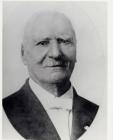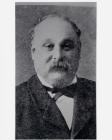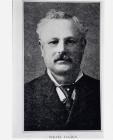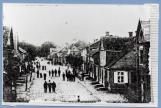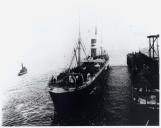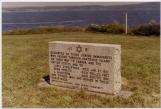1
The first permanent Jewish settlers in Saint John came from London, England by way of New York. At the time Solomon and Alice Hart and their children arrived in the city in 1858, this was one of the most important ports in British North America. They were followed the next year by Nathan and Jane Green and their children and by Henry Levy. All of these men were related by marriage. It was another eleven years before brothers, Abraham and Israel Isaacs joined them and later married two of the Hart daughters. These families were affluent by the standards of the day and were readily accepted in Saint John society.2
Solomon Hart, tobacconist and founder of Jewish community in Saint Johndied 1901
Saint John, New Brunswick
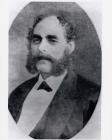
3
Alice Hart - wife of Solomon Hart and founder of Daughters of Israeldied 1915
Saint John, New Brunswick
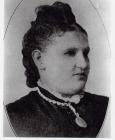
7
By the early 1890s, Jews in Eastern Europe were the victims of persecution sanctioned by the Czar of the Russian Empire who decreed that Jews would be eliminated from the Empire through death or migration. Most Jews suffered from poverty and the men were conscripted for twenty-five year terms into the Russian army. Many thousands of these Jews made their way to North America and many of them landed in Saint John which was one of two Canadian ports which was open to shipping through the winter months. Their first land fall in Saint John was on Partridge Island at the entrance to the harbour which served for decades as an immigration and quarantine station. Although many of those who arrived in the city merely passed through on their way to central Canada or the United States, a large number also chose to stay where they had landed. The existing Jewish community made them welcome with lodging, food, and jobs. Soon these men were sending for other family members - wives, children, parents, siblings. By 1920 the city's Jewish community had grown to 200 families. These people were Yiddish-speaking and were not readily accepted into Saint John life, either by the earlier Jewish immigrants or the city's residents at large.The Eastern European Jews began their lives as peddlers and then became store owners with most businesses appearing near their homes along Main Street in the city's North End. Over time some of these merchants moved into the uptown areas along King and Union Streets. These families came to form the majority of Jewish residents in Saint John and heavily influenced the texture of Jewish life in Saint John.
Ultimately they watched their grandchildren leave the city to attend university in larger cities, mostly in central Canada.
10
Immigrants on board the Lake Superior1902
Saint John, New Brunswick
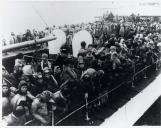 Credits:
Credits:Partridge Island Research Project
